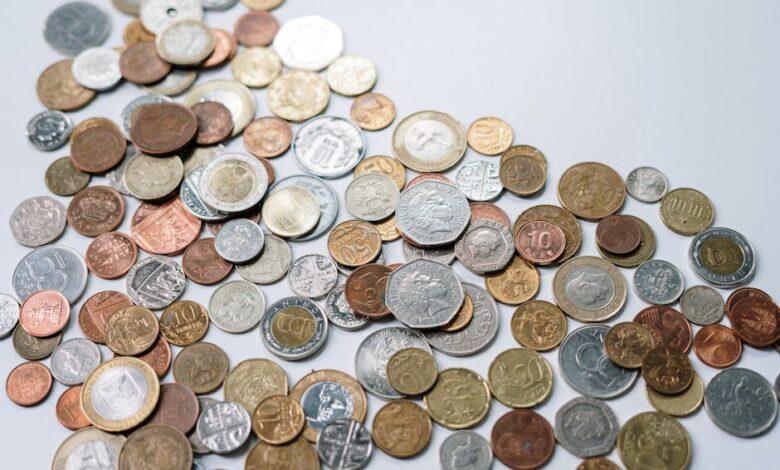Metal Matters: Understanding the Dynamics of Silver, Copper, and Rare Earths in Today’s Economy

The global metals market is a dynamic landscape where industrial utility and investment potential intersect in fascinating ways. As economies evolve and technology advances, metals such as silver, copper, and rare earth elements are increasingly at the forefront of both industrial applications and investment strategies. This article explores the multifaceted roles these metals play, beginning with silver's unique position as both a critical industrial resource and a favored investment asset. We will delve into the significance of copper prices as a barometer of global economic health, and examine how the burgeoning green energy sector is driving demand for rare earth metals, creating new opportunities for investors and industries alike. Furthermore, we will compare platinum and palladium as investment options, assess how metals can serve as a hedge against inflation, and discuss the future of aluminum in a sustainable economy. Additionally, we will address the influence of mining regulations on metal prices, shedding light on the complex interplay between policy and market dynamics. Join us as we navigate these critical topics and uncover the intricate connections that define the metal markets today.
- 1. **Navigating the Metal Markets: Silver's Dual Role in Industry and Investment**
- 2. **Copper's Economic Indicator: Analyzing Price Trends and Global Health**
1. **Navigating the Metal Markets: Silver's Dual Role in Industry and Investment**
Silver occupies a unique position in the metal markets, serving both as a vital industrial resource and a sought-after investment asset. On one hand, silver is integral to various industries, including electronics, photovoltaics, medical devices, and automotive manufacturing. Its excellent conductivity and resistance to corrosion make it an essential component in solar panels and electronic circuits, driving significant demand as global technology adoption increases. As industries pivot towards more sustainable practices and green technologies, silver's role is expected to grow, particularly in energy-efficient applications.
On the investment side, silver is often viewed as a safe haven asset, similar to gold, particularly during periods of economic uncertainty. Investors turn to silver to hedge against inflation and currency devaluation, as it has historically maintained its value over time. The metal's allure is enhanced by its relatively lower price compared to gold, making it accessible to a broader range of investors. Furthermore, silver's liquidity and tangible nature contribute to its appeal as a portfolio diversifier.
The interplay between these dual roles can create volatility in silver prices. For instance, when industrial demand surges due to technological advancements, it can drive prices up, attracting more investors. Conversely, economic downturns may lead to reduced industrial consumption, pushing investors to seek safety in silver, which can also elevate its price. Understanding these dynamics is crucial for both industrial stakeholders and investors, as they navigate the complexities of the metal markets. Overall, silver's dual role underscores its significance in both economic and investment landscapes, making it a critical metal to watch in the coming years.
Silver plays a multifaceted role in both industrial applications and investment markets. In industrial settings, silver is prized for its exceptional conductivity and antibacterial properties, making it essential in electronics, solar panels, medical devices, and various chemical processes. The growing trend toward sustainable energy technologies, particularly in solar energy, has significantly increased silver demand, as photovoltaic cells rely heavily on silver for efficient energy conversion. This dual demand—both from industrial use and as a safe-haven asset—positions silver uniquely in the market.
Copper prices serve as a barometer for global economic health due to copper's extensive use in construction, electrical wiring, and manufacturing. When economies are thriving, demand for copper typically surges, reflecting increased industrial activity and infrastructure development. Conversely, when economic conditions decline, copper prices often drop, signaling reduced demand. Thus, fluctuations in copper prices can provide insights into broader economic trends, making it a key indicator for investors and economists alike.
The rise of green energy technologies has further intensified the demand for rare earth metals, which are critical in the production of batteries, wind turbines, and electric vehicles. As nations strive to transition to cleaner energy sources, the need for these metals is expected to grow, pushing prices higher and prompting exploration and investment in mining operations. This shift not only underscores the importance of rare earth metals in the future energy landscape but also highlights geopolitical considerations, as supply chains for these materials can be concentrated in specific regions.
When comparing platinum and palladium, investors must consider several factors, including market demand, industrial use, and price volatility. Historically, platinum has been favored for its use in catalytic converters in diesel engines, while palladium has gained prominence due to its application in gasoline engines and tighter emissions regulations. Recently, palladium prices have surged, driven by increased demand and limited supply, making it an attractive option for investors. However, platinum's lower price point may present a long-term investment opportunity, especially as the automotive industry evolves.
Metals serve as a critical component in diversifying investment portfolios. Investors often turn to precious metals like gold and silver as a hedge against inflation and economic uncertainty. Industrial metals, such as copper and aluminum, can provide exposure to economic growth and infrastructure development. By incorporating a mix of metals into a portfolio, investors can balance risks and potentially enhance returns, leveraging the unique characteristics of each metal to navigate market fluctuations.
Inflation significantly impacts the prices of precious and industrial metals. As inflation rises, the purchasing power of currency declines, leading investors to seek refuge in tangible assets like metals, which often retain value. This demand can drive prices higher. Additionally, higher production costs for mining and refining metals during inflationary periods can further contribute to rising prices, creating a complex interplay between economic conditions and metal markets.
Looking ahead, aluminum's role in a sustainable economy appears promising. Lightweight and recyclable, aluminum is increasingly favored in manufacturing and construction, particularly in the automotive and aerospace industries, where fuel efficiency is paramount. The material's sustainability profile aligns well with global initiatives aimed at reducing carbon footprints, positioning aluminum as a key player in future green technologies.
Finally, mining regulations significantly influence metal prices. Stricter environmental regulations can increase production costs and limit supply, causing prices to rise. Conversely, deregulation may lead to increased production and lower prices. The balance of regulation and market demand is crucial for the stability of metal prices, impacting not only investors but also the broader economy reliant on these essential resources.
2. **Copper's Economic Indicator: Analyzing Price Trends and Global Health**
Copper is often referred to as “Dr. Copper” due to its historical role as an economic indicator, reflecting the health of the global economy. This metal is integral to various industries, including construction, electronics, and transportation, making its demand closely linked to economic activity. When economies expand, the demand for copper typically rises as infrastructure projects and manufacturing ramp up, driving prices higher. Conversely, during economic downturns, demand diminishes, leading to lower prices.
Analyzing price trends in copper can provide valuable insights into global economic conditions. For instance, a sharp increase in copper prices may signal anticipated growth in sectors such as construction and manufacturing, suggesting that investors are optimistic about future economic performance. Alternatively, declining prices could indicate a slowdown, as reduced demand from key industries reflects decreased economic activity.
Recent trends have shown that copper prices are also influenced by external factors such as trade policies, geopolitical tensions, and supply chain disruptions. For example, tariffs or trade restrictions can limit supply, causing prices to surge. Additionally, the growing emphasis on renewable energy and electric vehicles is expected to bolster copper demand, as these technologies require significant amounts of the metal for wiring, batteries, and other components.
In summary, copper prices serve as a barometer for global economic health, with fluctuations offering insights into both current conditions and future expectations. Investors and policymakers closely monitor these trends, recognizing that changes in copper prices can signal broader economic shifts.
In summary, the multifaceted landscape of metal markets reveals a complex interplay between industrial demand, investment potential, and economic indicators. Silver's unique position as both an industrial necessity and an investment vehicle underscores its significance in global markets, while copper prices serve as a barometer for economic health, reflecting broader trends and uncertainties. The rising demand for rare earth metals, driven by advancements in green energy technologies, highlights the evolving priorities of modern economies.
As investors weigh the pros and cons of platinum versus palladium, they must consider not only current market conditions but also the long-term implications of diversification within their portfolios. The impact of inflation on precious and industrial metals adds another layer of complexity, influencing investment strategies and pricing dynamics. Furthermore, the future of aluminum in a sustainable economy points to a critical shift towards more environmentally friendly practices, while mining regulations continue to shape supply chains and market stability.
Ultimately, understanding these interconnected factors is essential for navigating the metal markets effectively. As global economies adapt to new challenges and opportunities, investors and industry stakeholders alike must remain vigilant, informed, and adaptable to succeed in this ever-evolving landscape.





